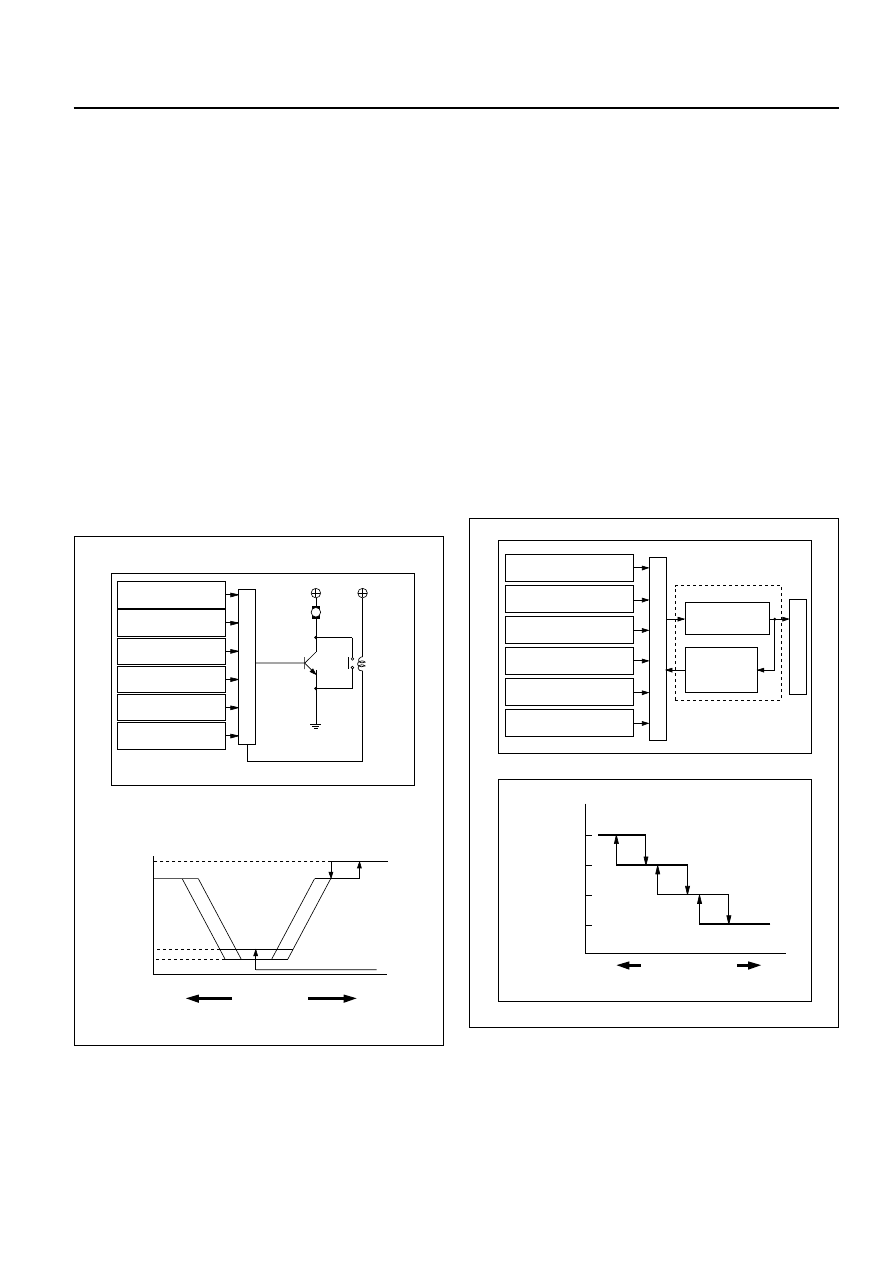Isuzu Trooper (1998-2002 year). Manual - part 37

AIR CONDITIONING 1B–89
2. Air Flow Control
• In the Auto Mode
The automatic heater/air conditioner control unit
operates on the setup temperature signal and
other sensor signals to derive the total signal.
Then, the control unit adjusts base potential of
the power transistor to match it to the voltage
pattern of the target fan so that stage-less fan
speed control can be achieved.
When solar radiation quantity is detected in the
VENT or B/L mode, the control unit increases the
minimum fan voltage to offset.
When FH or FC is selected from the temperature
control switch, air flow is accordingly fixed to
MAX HI or AUTO HI.
• In the Manual Mode
Air flow specified from the fan switch is entered
to the automatic heater/air conditioner control
unit as the manual signal. The signal modifies
the air flow to the level specified from the fan
switch so that the required fan voltage is
attained.
3. Mode (Blow Port) Control
The automatic heater/air conditioner control unit
operates on the setup temperature from the
control switch, and temperature and solar
radiation quantify from the sensors to determine
the total mode control signal. According to the
pattern specified by this signal, the control unit
selects either one of the VENT, BI-LEVEL, FOOT
or DEF/FOOT mode.
The mode actuator determines the rotation
direction comparing the target position against
the current position being determined by the
position detection signal.
When FH or FC is selected for the temperature
from the temperature control switch, mode is
accordingly fixed to the VENT or FOOT.
• In the manual operation of the mode switch, you
can select a desired blow port mode pressing
the corresponding mode switch.
• Operating the DEF mode switch selects the DEF
for the blow port mode.
4.5
12
(V)
M
MAX
HI Relay
Power
transistor
4.8
10.5
MAX HI
Set up
temperature signal
Control unit
In car sensor
Ambient sensor
Sun sensor
Mode control
signal
Fan switch
AUTO HI
Heater
side
Cooler
side
Total signal
VENT mode
Blower fan motor terminal voltage
C01RY00008
Mode control
DEF / FOOT
Set up temperature
signal
Mode actuator
Mode door
Position
detection
switch
Control unit
In car sensor
Sun sensor
Air conditioning
switch
Mode control
signal
Ambient sensor
FOOT
BI-LEVEL
VENT
Heater
side
Cooler
side
Mode total signal
C01RY00009